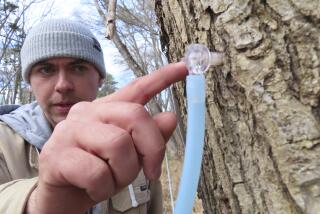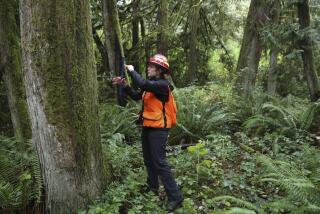Sugar Maple Trees Fall Victim to Highway Salting, Diseases
- Share via
BOSTON — Highway salting and a complex of diseases are ravaging sugar maple trees that have provided shade, blazing fall color and sweet syrup for generations in New England.
“There has been continuing problems with some mortality in sugar maples, especially among roadside trees, where a lot of beautiful maples happen to be found,” said Gil Bliss of the state Forest and Parks Department.
“There’s been a general decline. Road salt has been blamed and is partially at fault. Some trees have died that couldn’t have been affected by salt. It is a problem that has defied any real solution,” he said.
“There is not a simple cause such as in the Dutch elm disease,” said Terry A. Tattar, shade tree professor at the University of Massachusetts in Amherst.
He said that there is “a series of unknown factors. Once a tree becomes weak, almost like a human in poor health, the trees are coming down with all other diseases.”
He said that many maples were planted to replace the 50 million elms killed by Dutch elm disease throughout the United States during the last 50 years.
“The maple was . . . a very bad choice because the sugar maple does not tolerate roadside or backyard conditions and doesn’t like heat, drought or salt,” Tattar said.
“From what I have seen here, at least half the number of sugar maples in towns in western Massachusetts have been lost.”
Weak trees have produced a poor maple sap crop for syrup, said Pat Chandler of Ashland, coordinator of the 200-member Massachusetts Maple Syrup Producers Assn.
“During the last crop in the spring, there was very poor sap,” she said. “Ordinarily, you need 35 to 45 gallons of sap to a gallon of syrup. In the last year, you needed from 50 to 55 gallons. There has been no definitive answer to the decline.”
More to Read
Sign up for Essential California
The most important California stories and recommendations in your inbox every morning.
You may occasionally receive promotional content from the Los Angeles Times.













